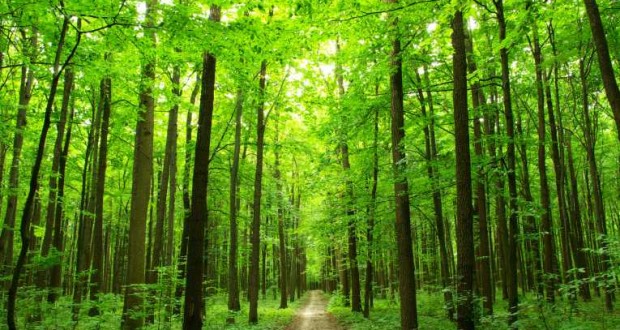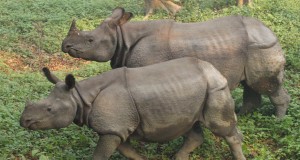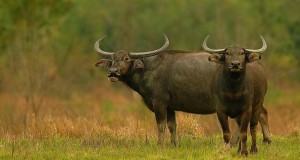Today, with a renewed emphasis on environment protection, forest development has, like many other matters of ecological significance, become a focal point of activity. Forests were greatly valued in ancient India. Everyday life was closely connected with nature; kings protected forests and ascetics retired to them for peaceful meditation in their quest for salvation (rnoksha). Emperor Chandragupta Maurya, as early as the 3rd Century B.C., had forests classified as those used for religious purposes and others to be exploited commercially. He also allotted some forest areas for hunting. Forest offenses and careless deforestation were punishable by death. During Emperor Ashoka’s reign (3rd Century B.C.), several species of trees were identified for protection. The abundant evidence of natural forms in the Indian art of this period reflects a great affinity with nature.
Emperor Chandragupta Maurya, as early as the 3rd Century B.C., had forests classified as those used for religious purposes and others to be exploited commercially. He also allotted some forest areas for hunting. Forest offenses and careless deforestation were punishable by death. During Emperor Ashoka’s reign (3rd Century B.C.), several species of trees were identified for protection. The abundant evidence of natural forms in the Indian art of this period reflects a great affinity with nature.
Alexander is said to have used Indian timber for building ships in the 4th Century B.C. For many centuries Indian wood was exported to Persia and Arabia, but this commercial activity was on a very small scale compared to the immense – , sity of India’s then forest resources’ and had no noticeable effect on the extent of forest cover. Hundreds of years later, in Mughal times, there was a great deal of hunting in the forests of North India. Nevertheless, although the Mughals had no positive interest in conserving forests, they did not harm or denude them.  At the turn of the 19th Century, however, the British developed a keen interest in the valuable woods of the Indian jungle. Some of the ships in Nelson’s fleet at Trafalgar had been built by the famous Bombay shipbuilders, the Wadias, teak replacing the English oak. Trees yielding prized wood like sandalwood, rosewood, satinwood
At the turn of the 19th Century, however, the British developed a keen interest in the valuable woods of the Indian jungle. Some of the ships in Nelson’s fleet at Trafalgar had been built by the famous Bombay shipbuilders, the Wadias, teak replacing the English oak. Trees yielding prized wood like sandalwood, rosewood, satinwood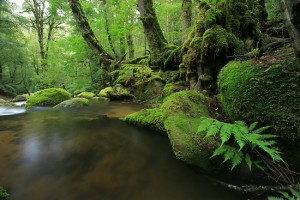 and ebony were felled for commercial purposes, doing great damage to India’s forest wealth.
and ebony were felled for commercial purposes, doing great damage to India’s forest wealth.
Despite steps taken by the British in the early 19th Century to regenerate forests, in the long run they encouraged agriculture at the expense of forests rather than as complementary to them. This short-sighted policy did immense damage.
Since independence, the Indian Government’s New Action Plan for Forestry has declared 33.33 percent of the whole land area of the country (60 percent on the hills and 20 percent in the plains) as reserved for forests. However, this has not prevented further extensive encroachments on India’s forest cover (now less than 9 percent in India) and unless firm and effective action is taken soon, the future does seem grim indeed. The situation in Nepal is equally serious. Destruction of forests there has resulted in frequent landslides and bare hillsides. In Sri Lanka, the situation is better, though also critical.
Natural Vegetation: An immense variety of flora is found in South Asia. In fact, due to climatic diversity in the subcontinent, it covers a whole range of types of vegetation regions from swamp and thorn forests to  alpine forests. The amount of rainfall and average temperature, the topography, soil conditions and altitude are the major factors that affect the vegetation of a region. Clean-cut lines demarcating each type are naturally impossible, and there are many areas where a mixture of types of vegetation is seen. The overlapping of types occurs both on the mountains and in the plains. Nevertheless, India can be divided into broad phytogeographical zones.
alpine forests. The amount of rainfall and average temperature, the topography, soil conditions and altitude are the major factors that affect the vegetation of a region. Clean-cut lines demarcating each type are naturally impossible, and there are many areas where a mixture of types of vegetation is seen. The overlapping of types occurs both on the mountains and in the plains. Nevertheless, India can be divided into broad phytogeographical zones.
The Deccan: This region, otherwise known as the Deccan Plateau, comprises_ Tamil Nadu,  Andhra Pradesh, a large part of Karnataka, Madhya Pradesh, Orissa, and parts of Maharashtra and Gujarat. Even within this peninsular area, the differences in annual rainfall cause variations in the natural vegetation.
Andhra Pradesh, a large part of Karnataka, Madhya Pradesh, Orissa, and parts of Maharashtra and Gujarat. Even within this peninsular area, the differences in annual rainfall cause variations in the natural vegetation.
In the southern portions, consisting of hilly terrain, the annual rainfall is 34 40 inches (86-100 cm) whereas in the northern parts of the Deccan the rainfall increases to 56 inches (142 cm). Dry deciduous forests rich in teak ( Tectona grandis), known for its excellent timber, is the dominant variety. Other large trees like mahogany (Swietenia), Indian rosewood ( Dalhergia), Terminalia and Chikrassia also grow here. These trees have abundant foliage and are of majestic dimensions, often growing to great heights and spreading wide. The sandalwood tree with its fragrant wood, is particu(Santalum), larly common in Karnataka. This tree is slender, with small leaves and tiny fruit. The wood in the living tree has no scent, yet the dry wood has a strong fragrance.
Intermittent patches of color break the plentimonotony of vast expanses of forestland. The flame of the forest ( Butea fronds ) is a burst of pale orange when in bloom, while Bauhinias and Lagerstroemias are laden with 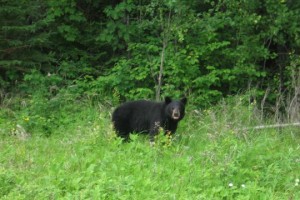 delicate white, pink and mauve blossoms in the flowering season. Cassia fistula with its shower of pale yellow flowers and Cassia nodosa, which has pink inflorescences, are exotic flowering trees that dot these forests.
delicate white, pink and mauve blossoms in the flowering season. Cassia fistula with its shower of pale yellow flowers and Cassia nodosa, which has pink inflorescences, are exotic flowering trees that dot these forests.
Many forests have a mixture of Acacia, Dillenia, red sandalwood, Odina, Grewia, Buchanania etc. Many epiphytic orchids adorn the trees in some areas — using the host tree for support and to gain access to sunshine, not living off the tree as parasites do.
In the northern stretches of the Deccan, sal (Shorea rohusta) forests extend from Madhya Pradesh to Orissa, and present a totally different picture. Sal trees are straight, compact and tall, with rounded leaves, and grow close together, forming stretches of homogeneous forests in continuous belts for many miles. 
In those areas of the Deccan where rainfall is lower, the vegetation changes to scrub forests. The hardy trees here are, to a large extent, thorny and well adapted to dry climatic conditions. The mixed population of trees consists of Zizyphus, Acacia, Capparis, Balanites, Euphorhia, e,Ftc l.,Pa focrmroinoug trsh-inholy awpodieds forests.
Coastal Areas: These form a striking contrast to the forested areas although lying in close proximity to them. 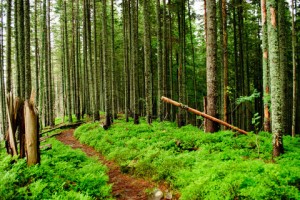 Here, there are long stretches of coastline with symmetrical coconut palms that bear a rich yield of coconut. Further inland in the coastal plain jackfruit and mango trees are plentiful along with tamarind. In some pockets of the Deccan coast, near the river estuaries, mangroves, typical of wet marshy areas, are common.
Here, there are long stretches of coastline with symmetrical coconut palms that bear a rich yield of coconut. Further inland in the coastal plain jackfruit and mango trees are plentiful along with tamarind. In some pockets of the Deccan coast, near the river estuaries, mangroves, typical of wet marshy areas, are common.
The west coast region comprises the Western Ghats and extends from Gujarat in the north to Kerala in the south. It has, in places, an annual rainfall of over 100 inches (250 cm). Its natural exuberance is apparent in its rich forests and lush tropical vegetation. The tropical evergreen forests are remarkable for their luxuriant growth of trees, both tall and medium-sized, which do not as a rule shed their leaves annually. To add to the prolific vegetation, many shrubs, climbers, epiphytes, bamboo and ferns grow in abundance. These thick-set jungles have been utilized by man in several ways. Hevea and Ficus elashca yield rubber, while ebony (Dyospyros) and toon ( Cedrela) are good timber sources. The species common here are Dipterocarpus, Artocarpus, sandalwood (Tantalum), red sandalwood (herocarpus), nutmeg (Myristica), Alexandrian laurel (Calophyllum), Michelia, Ternstroernia, CMTHa,oitrceononurnp-custuo epdlasailam.s (Cocos), talipot palms, thick shrubbery and climbers complete the scene of tropical splendor.
In most areas of the west coast region where rainfall is relatively low (60 80 inches/ 150-200 cm), vegetation is sparse and consists mainly of deciduous trees. These shed their leaves annually and remain bare after leaf-fall. Mountain ebony ( Bauhinia), teak, Dalhergia, Adina, fLGaaiorma ganre ansresosrttmwreontde,mia of trees of many sizes, some with beautiful flowers and others with high-quality wood. Characteristic of this area is bamboo ( Barnhusa), which grows in dense clumps. The bamboo here is very long and has a large girth. It is used in house building and furniture making.
In the higher ranges of this region, tucked away in comparatively smaller areas, are temperate evergreen forests with Michelia, Eugenia, Ternstroernia etc.
Dry Lands: In sharp contrast to the green West Coast Region is the Indus Plain. This phytogeographical region covers parts of Indian Punjab, Rajasthan, and most of Pakistan. Annual rainfall varies from a low 10-20 inches (25-50 cm) in Rajasthan to 25-30 inches (64 76 cm) in the Punjab. The area suffers from extremes of temperature and low himidity. Winter can be harsh and summer equally unpleasant, with blistering heat and hot winds. The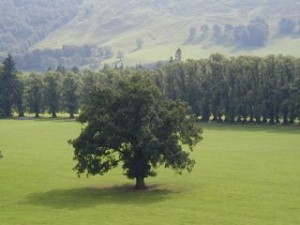 soil has a high percentage of salts and is sandy. A large part of Rajasthan is covered by the Thar Desert, and shifting sand-dunes cause desertification. On the fringes of the desert the vegetation is typically xerophytic, adapted to dry surroundings — their long roots penetrating deep below the earth’s surface and enabling the plants to avail of subsoil moisture. Such vegetation requires very little water and can survive in extreme climates and tolerate harsh soil conditions. In order to prevent evaporation the leaves are small, stems greatly reduced, and the pores on the leafsurfaces few in number.
soil has a high percentage of salts and is sandy. A large part of Rajasthan is covered by the Thar Desert, and shifting sand-dunes cause desertification. On the fringes of the desert the vegetation is typically xerophytic, adapted to dry surroundings — their long roots penetrating deep below the earth’s surface and enabling the plants to avail of subsoil moisture. Such vegetation requires very little water and can survive in extreme climates and tolerate harsh soil conditions. In order to prevent evaporation the leaves are small, stems greatly reduced, and the pores on the leafsurfaces few in number.
Along the riverbanks there is abundant subsoil moisture although the soil is sandy. Where there is black saline soil there is no vegetation at all. The desert thorn forests of this area consist mainly of Prosopis, Salvadora oleoides and Caparis. These grow in isolated clumps. Acacia, Tarnarix, Alhizzia lehhek, Morus alba and flame of the forest are the mixed varieties that constitute such forests. Arabian grass, saltwort and seablite grow where there are salt tracts. The undergrowth consists of thorny shrubs.
Dune scrub which differs from the forest vegetation also resists desert conditions and is characterized by stunted trees and bushes with adaptive thorns. This vegetation is found in southern Punjab and Rajasthan. The only tree found here is Acacia jacquernontiaa. Sandy alluvial deposits are found on the banks of the rivers of this region. Dominant here are forests consisting mainly of species like Acacia caiechu and Dalbergia sissoo. Poplars (Populus) and Tantarix occur here and there.
On the whole, the “Indus region” consists of hardy plants that can protect themselves against trying weather conditions.
Gangetic Plain: The vegetation of the Gangetic Plain slowly changes from that of the Indus Plain since the rainfall increases gradually as one mo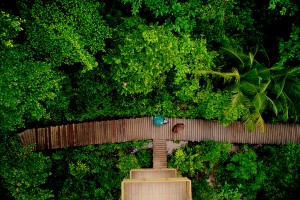 ves eastwards. This region can be divided into three parts. The upper, dry sub-region extends from Punjab to Allahabad in Uttar Pradesh. It receives 20-40 inches (50 100 cm) of rainfall annually. Peganum, Acacia, Moringa, Prosopos, Tecoma, Rhus etc., and some palms are found in this subregion. The vegetation is still quite sparse in the area and, where the soil is alkaline, Salvadora is common. This region also has grasslands or savanahs interspersed occasionally with Bombay, Butea, Zizyphus and Randia.
ves eastwards. This region can be divided into three parts. The upper, dry sub-region extends from Punjab to Allahabad in Uttar Pradesh. It receives 20-40 inches (50 100 cm) of rainfall annually. Peganum, Acacia, Moringa, Prosopos, Tecoma, Rhus etc., and some palms are found in this subregion. The vegetation is still quite sparse in the area and, where the soil is alkaline, Salvadora is common. This region also has grasslands or savanahs interspersed occasionally with Bombay, Butea, Zizyphus and Randia.
In the lower Gangetic Plain which stretches from Allahabad to West Bengal, the rainfall is 76 100 inches (190-250 cm). Mangifera„4rtocarpus, Focus, Areca, Borassus, Phoenix, Lagersiroemia, Pterospermunt , Bombax, gPCaroowa lcvomsnamulo-nilayh inird tahie nareaa. The vegetation grows more abundant and many different aroids begin to occur. Aquatic plants, several types of grasses and sedges abound in the vicinity of lakes and small reservoirs.
The third part of the Gangetic Plain is an unusual area forming the vast Sunderbans around the delta of the Ganga in both India and Bangladesh. Characteristic of this region are interconnected waterways and marshy swamps. The sea makes its way into the land through a number of creeks. The tidal swamp forests of the delta region cover an area of 6000 sq miles (15,500 sq km), the largest stretch of swamp forest in the world, most of it lying in Bangladesh. The area is thick with evergreen trees and shrubs typical of mangrove or littoral forests, which thrive in the saline water washed in with the tide. Typical mangrove trees like Rhizophoras, Ceriops, Kandella and Bruguiera are prolifi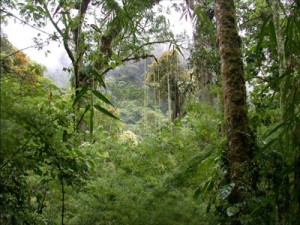 c in the area. Of the 36 species of mangrove trees found in the _ Sunderbans, Avicennia officinalis is the largest. The little swampy islands found here and there are covered with savannah grass. Palms like Nipa fruiicans, Phoenix paludosa, coconut palms and cane ( Calantus) occur extensively. Elephant grass and screwpine grow near streams, ponds, swamps and canals. The vegetation is thick and many species bind the mud and prevent it from being washed away. Ferns and orchids are also found here. The flora of the Sunderbans is of great interest to the botanist, the infinite variety and uncommon growth conditions making it exceedingly attractive for study. The forests of this area give economic support to the people —firewood and timber being the most important products.
c in the area. Of the 36 species of mangrove trees found in the _ Sunderbans, Avicennia officinalis is the largest. The little swampy islands found here and there are covered with savannah grass. Palms like Nipa fruiicans, Phoenix paludosa, coconut palms and cane ( Calantus) occur extensively. Elephant grass and screwpine grow near streams, ponds, swamps and canals. The vegetation is thick and many species bind the mud and prevent it from being washed away. Ferns and orchids are also found here. The flora of the Sunderbans is of great interest to the botanist, the infinite variety and uncommon growth conditions making it exceedingly attractive for study. The forests of this area give economic support to the people —firewood and timber being the most important products.
Assam Region: The northeastern region of India is exceedingly wet and humid. Annual rainfall varies from 110 inches (280 cm) in the Garo hills to 510 inches (1300 cm) at Cherra Punji. On the whole it averages at a high 80 inches (200 cm). The region does not experience large fluctuations of climate. The temperature is mild and ranges between 86°F and 68°F (30°C and 20°C). The hills, however, are much colder. Humidity is between 80 and 90 percent. The torrential Brahmaputra river flows right through the Assam Valley, spreading its rich alluvial deposits on the banks. The soil is extremely fertile and all these favorable conditions together result in extraordinarily rich and lush vegetation, making some pockets of Assam the world’s richest in flora. Hills and plains have an abundant supply d water and are covered with uninterrupted forests.
The tropical evergreen or rain forests extend from northeast Arunachal Pradesh to Darrang district in Assam. They also occur in Nowgong and Cachar districts in Assam and most of the Khasi hills in Meghalaya. The peculiarity of 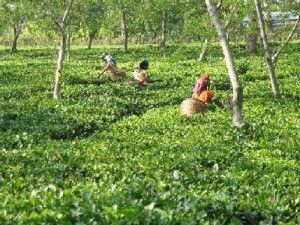 these forests is their three-tier structure. The top tier looms over the rest and consists of isolated, tall, evergreen or deciduous trees which grow to a height of around 150 feet (46 meters). The most common species among them are Dipterocarpus macrocarpus, Artocarpus, Chaplasha, Tetrameles and Terminalia, each growing tall and handsome, with spreading branches and abundant foliage. The middle tier consists of several medium-sized trees growing up to a height of about 80 feet (25 meters). Colophyllum, Mesua, Emoora, Cinnamomum , Phoebe, Machilus andDuahanga form the mixed middle layer. Ficus elassica, Michelia, Magnolia and Schima are also found. The ground tier consists of shrubs and climbers, orchids, aroids and ferns that cover every inch of land.
these forests is their three-tier structure. The top tier looms over the rest and consists of isolated, tall, evergreen or deciduous trees which grow to a height of around 150 feet (46 meters). The most common species among them are Dipterocarpus macrocarpus, Artocarpus, Chaplasha, Tetrameles and Terminalia, each growing tall and handsome, with spreading branches and abundant foliage. The middle tier consists of several medium-sized trees growing up to a height of about 80 feet (25 meters). Colophyllum, Mesua, Emoora, Cinnamomum , Phoebe, Machilus andDuahanga form the mixed middle layer. Ficus elassica, Michelia, Magnolia and Schima are also found. The ground tier consists of shrubs and climbers, orchids, aroids and ferns that cover every inch of land.
The pine forests of the Khasi hills, however, are devoid of the brush that gives the forest elsewhere its dense cover. Other trees present here mixed with pine are oak ( Quercus), Pieris, chestnut ( Castanopsis) and birch (Betula). In other areas, yew ( Tayus), spruce (Picea), silver fir (Ebies), deodar or cedar (Cedrus), Tsuga, cypress (Cupressus) and juniper (Juniperus)  occur. Pines, yews and Tsuga are the few varieties that survive at very high altitudes.
occur. Pines, yews and Tsuga are the few varieties that survive at very high altitudes.
In the lower Assam Valley, in the Garo hills and North Cachar hills, there are sal forests which are mainly of the deciduous type. Scrub forests also occur here and are dotted with colorful trees like Lagersiroemia, Cassia fistula, Bombay, Sterculia and others like Schima wallichii, Careya arborea, Dilleni s they are pure sal forests, consisting of a variety peculiar to the region (Shorea assamica) which grows to a height of 100 feet (30 meters). These unmixed sal forests present a beautiful and eye-catching picture.
s they are pure sal forests, consisting of a variety peculiar to the region (Shorea assamica) which grows to a height of 100 feet (30 meters). These unmixed sal forests present a beautiful and eye-catching picture.
In the dry regions of Cachar, forests are heterogeneous, consisting of Dipterocarpus, Edina , Bombay, Stephegyne, Ficus and Cassia nodosa. Bamboo and several grasses are common. Colorful flowering shrubs provide an attractive ground cover — white Coffee hengalensis, blue Strobi-lanthes, white and yellow Mussaenda and scarletred Holmskioldia.
Assam is unique and is unparalleled in the variety and richness of its forest wealth. In the swampy regions of the Assam valley, aquatic and semi-aquatic grasses and aquatic ferns of many varieties are prominent. The flowering plants that occur commonly are Eurvale, Alpinia, water lilies (Nymphal ), lotus ( ATelumbo). Among the trees, Barringionia, Cephalanthus, and some Ficus species are seen here.
Another variation in the vegetation of Assam occurs in the low-lying areas which have very little rainfall. Along the riverbanks are very tall grasses, whereas the dry lands have short and sturdy varieties.
In the foothills of the Bhutan range, extending from Goalpara district to Darrang district, are the riparian forests that grow along large streams and are composed mainly of two tree varieties, Acacia catechu and Dalhergi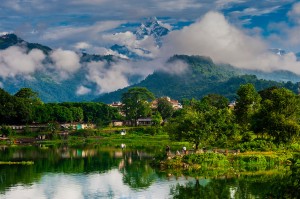 a sissoo. The few mixtures are mostly of Duahanga, Bombax, Trewia, Barringtonia, Salix, Anthocephalus. In the northeast region, there is another interesting occurrence among the flora — carnivorous plants and parasites abound. Over four hundred species of orchid and innumerable varieties of fern, and even fern trees, are special to this region. Himalayan Flora: The vast area covered by the magnificent Himalaya mountain range lies to the extreme north of India and includes Bhutan, Nepal and parts of Pakistan. On the basis of climatic conditions, the Himalaya can be divided into three fairly distinct regions: the eastern Himalayan region, extending from the Arun Valley in East Nepal to the Mishmi hills of Arunachal Pradesh, has an average precipitation of 120 inches (300 cm) a year.
a sissoo. The few mixtures are mostly of Duahanga, Bombax, Trewia, Barringtonia, Salix, Anthocephalus. In the northeast region, there is another interesting occurrence among the flora — carnivorous plants and parasites abound. Over four hundred species of orchid and innumerable varieties of fern, and even fern trees, are special to this region. Himalayan Flora: The vast area covered by the magnificent Himalaya mountain range lies to the extreme north of India and includes Bhutan, Nepal and parts of Pakistan. On the basis of climatic conditions, the Himalaya can be divided into three fairly distinct regions: the eastern Himalayan region, extending from the Arun Valley in East Nepal to the Mishmi hills of Arunachal Pradesh, has an average precipitation of 120 inches (300 cm) a year.
The next division, namely the central Himalayan region, is demarcated by a sharp decrease in rainfall, and comprises chiefly Nepal and Eastern Uttar Pradesh in India. The third division, the western Himalayan region, originates in Peshawar in Pakistan, where the annual precipitation is 20 inches (50 cm) and extends in a southeasterly direction towards the Kumaon hills in Uttar Pradesh, with the precipitation increasing gradually to approximately 40 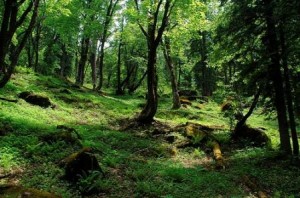 inches (100 cm) in Kumaon. It is, however, important to note that it is the altitude, determining the temperature of an area, that is the most important factor contributing to regional variations in the Himalayan flora. Because of this, the three divisions mentioned, can, in turn, be split up into zones, according to differences in altitude, running in a northwest to southeast direction across the whole expanse of the Himalaya. These divisions and zones, however, often do not have well-defined boundaries, due to an inevitable overlapping of vegetation types.
inches (100 cm) in Kumaon. It is, however, important to note that it is the altitude, determining the temperature of an area, that is the most important factor contributing to regional variations in the Himalayan flora. Because of this, the three divisions mentioned, can, in turn, be split up into zones, according to differences in altitude, running in a northwest to southeast direction across the whole expanse of the Himalaya. These divisions and zones, however, often do not have well-defined boundaries, due to an inevitable overlapping of vegetation types.
The tropical zone, with rainfall of 40-60 inches (100-150 cm), lies south and east of the Himalayan foothills, and is locally known as the terai region. The thick forests of the terai can be divided into two types, according to variance in rainfall — areas having an annual rainfall of over 100 inches (250 cm) support evergreen forests, whereas deciduous forests are found in regions where the rainfall is sparse.
The temperate zone of rainfall 60-140 inches (150-350 cm) is otherwise called the coniferous zone due to the predominance of conifers. This zon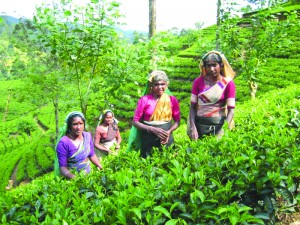 e has abundant flora and exhibits decrease in vegetation with increase in altitude.
e has abundant flora and exhibits decrease in vegetation with increase in altitude.
North of the coniferous zone lies the alpine zone where the highly unconducive temperature and rainfall (140- 180 inches/350-450 cm) conditions support only a meager plant cover. This region stretches from above the tree line to the permanent snow line.
The eastern Himalaya is populated with varied and profuse flora. Over 4000 species of flowering plants and a few hundred varieties of ferns make it a richly vegetated area. Amongst the conifers, the predominant species are many varieties of pine ( Pinus khasva, P. excelsa, P. longifolia). Himalayan silver fir, junipers, Podocarpus and Picia are also common varieties. Growing abundantly here are several species of rhododendron adorned with flamboyant blossoms. Berheris, Impatiens, Saxfraga, and Himalayan poppies are a few examples of the numerous flowering plants of this region. Adding to the lush vegetation are orchids, bamboos, palms, epiphytes and creepers.
abundantly here are several species of rhododendron adorned with flamboyant blosthe common conifers are found in many varieties of pine and juniper. Nuts longifolia, P. excelsa and P. gerardiana are the predominant varieties of pine, while Juniperus communis and J. recurva are the common junipers. The mixed species found in this region are Abies pindrow, cypress (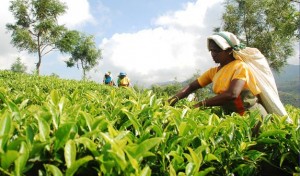 Cupressus torulosa), deodar (Cedrus deodara), Picl morinda etc. The exuberant growth in the east formed by rich flowering plants, orchids, palms and amboo is far from being equalled in the western region. The variation in the two regions is apparent in the fact that the epiphytes and creepers that form an important part of the eastern forests are in quite insignificant numbers here, whereas grasses and leguminous plants are comparatively common due to the drier climatic conditions. Although rhododendrons are found here, the number of species is considerably less than in the eastern Himalaya. Rubus, Rosa, Prunus, Pvrus, Ranunculus etc., form the vegetation of the upper reaches.
Cupressus torulosa), deodar (Cedrus deodara), Picl morinda etc. The exuberant growth in the east formed by rich flowering plants, orchids, palms and amboo is far from being equalled in the western region. The variation in the two regions is apparent in the fact that the epiphytes and creepers that form an important part of the eastern forests are in quite insignificant numbers here, whereas grasses and leguminous plants are comparatively common due to the drier climatic conditions. Although rhododendrons are found here, the number of species is considerably less than in the eastern Himalaya. Rubus, Rosa, Prunus, Pvrus, Ranunculus etc., form the vegetation of the upper reaches.

